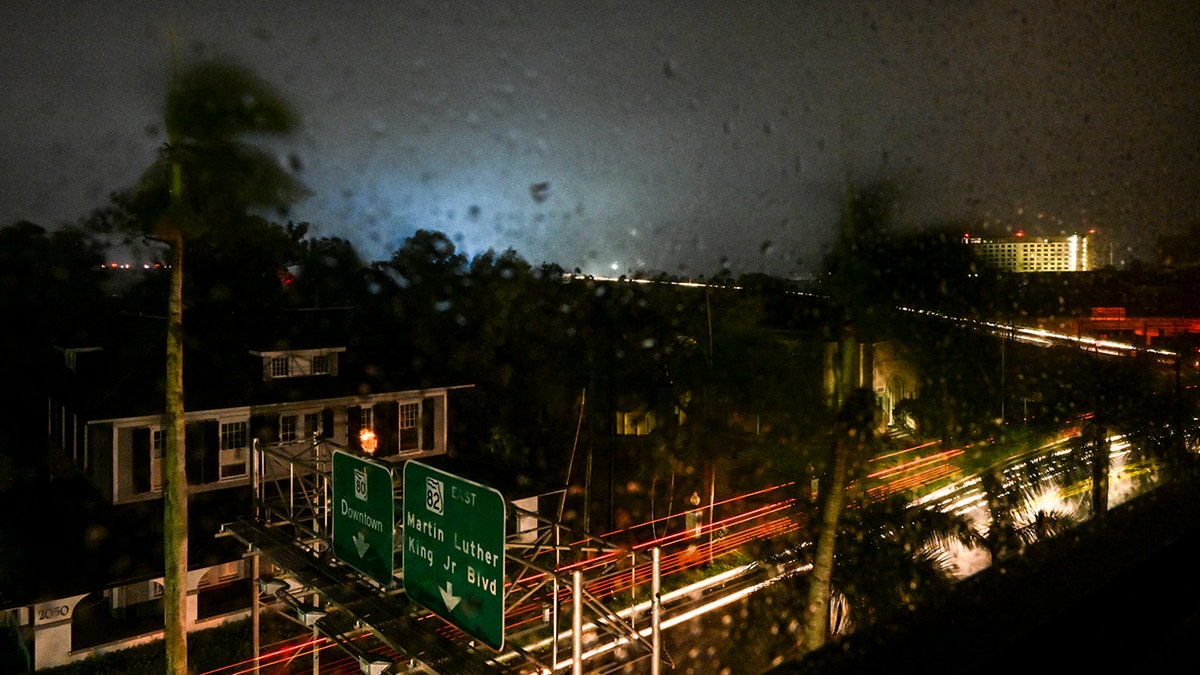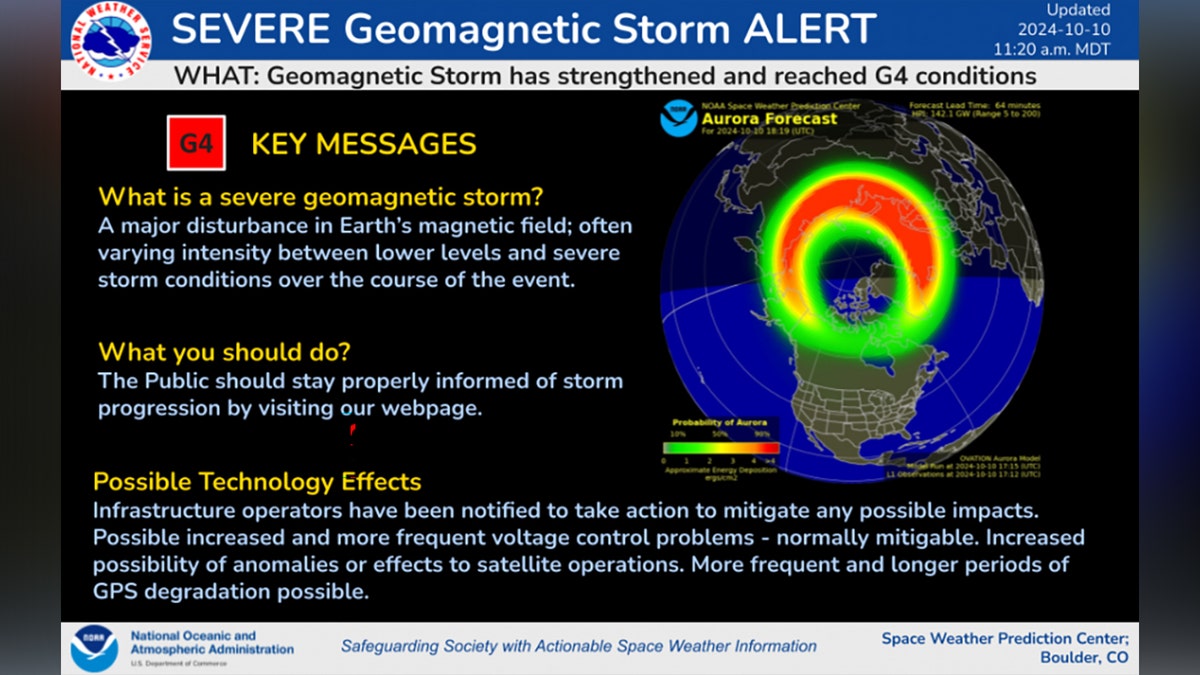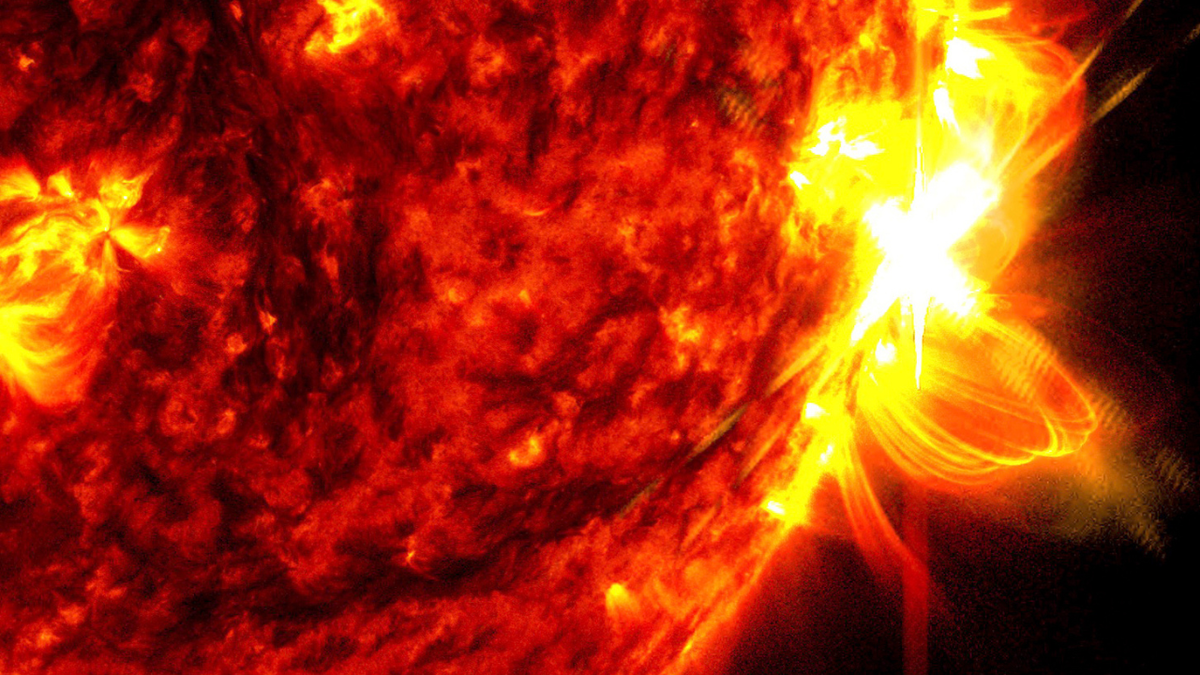A strong solar storm that reached Earth on Thursday could further emphasize electricity networks as the United States trample on the main hurricanes in space, according to spatial weather forecasts.
The National Ocean and atmospheric Administration (Noaa) said on Thursday that an expulsion of coronal masses (CME) exploded the Sun on Earth by 11 am
The space prediction center issued multiple warnings and alerts for geomagnetic storm conditions, and on Thursday the Earth was experiencing G4 or serious conditions.
Noaa said that a strong geomagnetic storm is an important disturbance in the magnetic field of the Earth. Storms often have a varied intensity between lower levels and severe storm conditions throughout the event.
Geomagnetic storm that is expected to reach Earth after the autumn equinox
This image provided by the NASA Solar Dynamics Observatory shows a solar, right -wing solar flare, captured in the extreme ultraviolet light portion of the color spectrum in red and yellow. (NASA/SDO Via AP)
Geomagnetic storms could affect the GPS electricity, satellites, and technology.
“Storm conditions are expected to occur at night as the CME progress continues,” Noaa said on his website. “Variations due to the passage of CME will give rise to periods of weakening and climbing at the levels of geomagnetic storm.”
Earlier this week, Noaa published a severe geomagnetic storm clock for Friday after a sun outlet was detected. A geomagnetic storm has the potential to temporarily disturb the power and radio signals.
In preparation for the storm, Noaa notified the operators of electric power plants and those who control the space ships that orbit the planet to take precautions.
The geomagnetic storm arrives on Earth by creating northern lights, disturbing radio communications

A power transformer explodes, creating a light in the background, as Hurricane Milton drops Fort Myers, FLA., Wednesday. (Chandan Khanna/AFP through Getty Images)
NOAA also notified the Federal Emergency Management Agency (FEMA) on possible power interruptions, as it deals with the devastation left of Hurricane Helene, and now the Hurricane Milton, which caused the landing near Siesta Key, Florida, on Wednesday night as a storm of category 3, with winds of up to 120 mph.
Spatial meteorological forecasts do not expect the last sun storm to beat the Earth in May, which was the strongest in more than 20 years.
Florida is south enough to avoid the power interruptions of the solar rise unless it gets much larger, the scientist Rob Steenburgh, of the Noaa Space Meteorological Center, told The Associated Press on Wednesday.
North lights can be seen in some portions of us this week after “strong solar activity”

Noaa issued a strong geomagnetic storm alert after an expulsion of coronal mass exploded to Earth earlier this week. (Noaa)
“This adds a little more to the level of comfort,” Steenburgh said. “Why we are here is to make them know why they can prepare.”
Experts are more concerned with the potential effects on electricity networks in hurricane areas Helene two weeks ago, said Shawn Dahl, scheduled for Noaa Space.
The storm can also trigger northern lights to the south of the United States, such as the Midwest and North California, although the exact locations and times are uncertain, according to Noaa. It is reminded of Sky Gazers to indicate their smartphones upwards to take photos; Devices can often capture auroras that human eyes cannot.
Click here to get the Fox News app
May’s solar storm produced dazzling auroras through the northern hemisphere, and did not lead to an important interruption.
The sun is near the peak of its current 11 -year cycle, causing all recent solar activity.
Associated Press contributed to this report.
#heavy #geomagnetic #storm #stress #power #grid #recovery #continues #main #hurricanes
Image Source : www.foxnews.com
